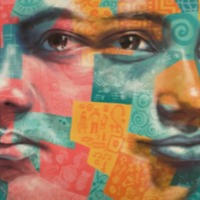
Marilou R.
There are an estimated 61,000 people living in modern slavery in Saudi Arabia (GSI 2018). It is a source and destination country for men and women trafficked from South and South East Asia and Africa. People voluntarily migrate to the country to work in a variety of sectors including construction and domestic service; many of these workers are vulnerable to forced labour. Traffickers and brokers often illegally recruit migrants to work in Saudi Arabia and subsequently forced them into domestic servitude or debt bondage. Female domestic workers are particularly at risk of trafficking due to their isolation inside private residences. Non-payment or late payment of wages remains a complaint from foreign workers, while employer's withholding of worker's passports remains a significant problem. Trafficking perpetrators include businesses of all sizes, private families, recruitment companies in both Saudi Arabia and labor-sending countries and organized criminal elements. Marilou R. travelled from the Philippines to Saudi Arabia to help pay for her nephew’s medication. Her communication from her family and other workers was cut off and her labour went unpaid.
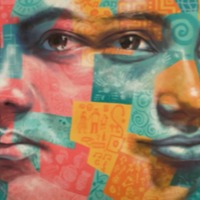
Mun Pan
The Global Slavery Index 2018 estimates that on any given day in 2016 there were over 3.8 million people living in conditions of modern slavery in China. Women and girls from South Asia, Southeast Asia and Africa are trafficked into the country for fees of up to £30,000. The gender imbalance caused by the One Child Policy and the cultural preference for male children, has caused a shortage of women which has led to the trafficking of women to be sold as brides or to birth babies. As a result many women find themselves either deceived by promises of employment, sold or abducted and forced into marrying Chinese men who have paid for them. Mun Pan was barely 18 years old when she was trafficked from Myanmar to China and forced to provide children for Chinese men.The women in Mun Pan’s room told her that if she tried to escape, she would be murdered and her body would not be returned to her family.

Bhanu
The Global Slavery Index 2018 estimates that on any given day there were nearly 8 million people living in modern slavery in India. The GSI 2018 reports an emerging trend in northeast India where organised trafficking syndicates operate along the open and unmanned international borders, duping or coercing young girls seeking employment outside their local area in to forced sexual exploitation. Many women and girls are lured with the promise of a good job but then forced in to sex work, with a 'conditioning' period involving violence, threats, debt bondage and rape. Bhanu* was 13 when she was abducted by a man, taken to Mumbai and forced to provide sexual services to customers in a brothel. She was able to escape one day with the help of a customer.
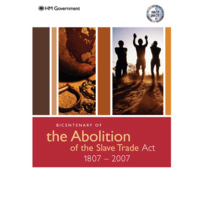
Bicentenary of the Abolition of the Slave Trade Act 1807-2007
The official publication from the British Government in response to the bicentenary included a message from Prime Minister Tony Blair. It set out the history of transatlantic slavery and resistance to it, and featured a calendar of upcoming events for 2007 relating to slavery and abolition. The publication also detailed contemporary efforts to end modern slavery. Later in 2007, 'The way forward: bicentenary of the abolition of the Slave Trade Act 1807-2007' reflected on some of the commemorative activity that had taken place in Bristol, Hull, Liverpool, London and Greater Manchester. With a foreword by the new Prime Minister, Gordon Brown, the theme of the publication was 'Reflecting on the past, looking to the future' and it linked efforts for the abolition of historical and contemporary slavery. The publication also looked to how to tackle inequality and poverty in the UK, Africa and the Caribbean.
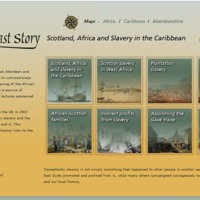
A North East Story: Scotland, Africa and Slavery in the Caribbean
This online exhibition and learning resource linking the history of transatlantic slavery to North East Scotland was organised by an Aberdeen and Aberdeenshire Bicentenary Committee, including representatives from Aberdeenshire Council, Aberdeen City Council, the University of Aberdeen, the Robert Gordon University and the African and African-Caribbean communities. It followed on from a service of commemoration and a series of public lectures sponsored by the Committee in 2007. The exhibition logo is inspired by the mythical Sankofa bird, a cultural symbol of the Akan-speaking peoples of Ghana in West Africa. Featured here are a number of resources available to download from the North East Story website.
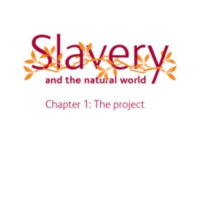
Slavery and the Natural World
In consultation with local community groups, in 2007 the Natural History Museum commissioned new research into its collections that link slavery and the natural world. The research uncovered experiences of enslaved people and the use of plants in their everyday life, as food, medicines and poisons. It also examined the complex relationships between enslaved people and naturalists exploring newly-colonised lands. The museum ran a series of public events, co-hosted by Race on the Agenda, which aimed to bring the historical, scientific and public viewpoints together. It created online educational resources on themes such as Commercial Plants, Everyday Life, Diet and Nutrition, and Resistance. The museum also developed cross-curricular ideas for school lessons in Science using the context of slavery, looking at foods across different cultures, for example.
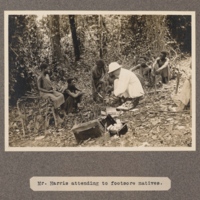
Mr. Harris attending to footsore natives
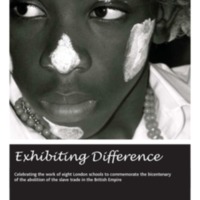
Exhibiting Difference
The Hunterian Museum at the Royal College of Surgeons holds the human and comparative anatomy collections of the surgeon John Hunter (1728-1793). The Exhibiting Difference project was the Hunterian Museum’s contribution to the bicentenary, exploring the history of the transatlantic slave trade through the history of medicine and the experiences of those who lived on the margins of society. Exhibiting Difference focused on the hidden histories of Black Africans living with skin pigmentation conditions in the 18th and 19th centuries, and thus explored issues of identity, self-image and cultural distinctiveness. Curated by Temi Odumosu, the exhibition ‘A Visible Difference: skin, race and identity 1720-1820’ was opened at the Hunterian Museum, featuring portraits of Black African slave children, Mary Sabina and George Alexander Gratton, who both had the skin pigmentation condition piebaldism. The museum also worked with over 200 secondary school students and four professional artists to create a display of sculpture, painting, collage, photography, film and sound recording reflecting the themes of the project. Learning resources were produced to support citizenship education.
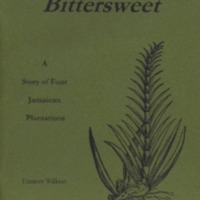
Bittersweet
The Bittersweet exhibition was held during the summer of 2007 at Tissington Hall, Derbyshire, home of the FitzHerbert family since the 17th century. The exhibition and accompanying booklet by Frances Wilkins describe life, work and slavery on four Jamaican sugar plantations inherited by the FitzHerbert family in the 18th century - Blue Mountain, Forrest, Grange Hill and Vere, plus the coffee plantation of Retrieve Mountain - and subsequently managed from Tissington Hall. Research of the FitzHerbert papers held at Derbyshire Record Office revealed evidence about the lives of the enslaved and the overseers, the sugar production process and the connections to plantation owners in England. The exhibition was housed at Tissington during 2007 and then was available on loan to other houses in Derbyshire and to local schools. The exhibition coincided with Tissington’s annual Well Dressing celebrations. The special 2007 design to commemorate the bicentenary was by Wendy Greatorex (photographer Glyn Williams). Tissington Hall was one of several member houses of the Historic Houses Association to mark the bicentenary.
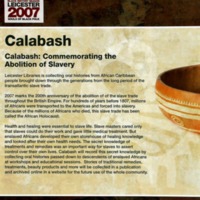
Calabash
Leicester Libraries collected oral histories from African Caribbean people brought down through the generations from the transatlantic slave trade. Health and healing were essential to slave life, and enslaved Africans developed their own healing knowledge. The Calabash project recorded this secret knowledge by collecting oral histories passed down to descendants of enslaved Africans at workshops and educational sessions.